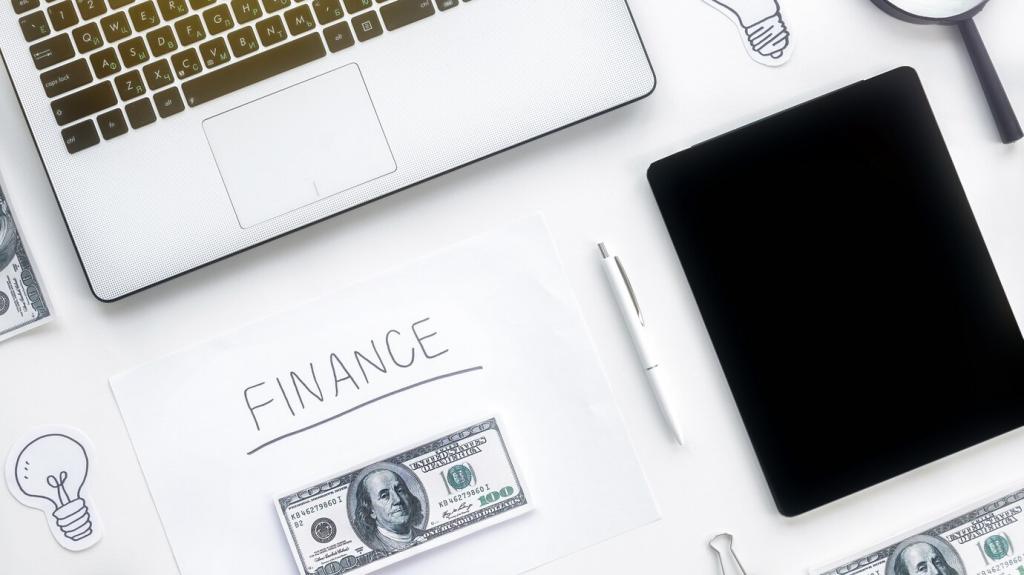Emergency Fund Strategies: Build Calm in a Chaotic World
Chosen theme: Emergency Fund Strategies. Welcome to your practical, confidence-boosting playbook for preparing cash reserves before life throws the unexpected at you. Read on, share your goals, and subscribe for weekly strategies that make saving feel simple and sustainable.
Why an Emergency Fund Matters Right Now
The Peace-of-Mind Dividend
Knowing you have cash set aside for emergencies reduces stress, improves sleep, and helps you make better decisions. Tell us: how would your day feel different if you had three months of expenses safely tucked away?
Avoiding Costly Debt Spirals
Without a buffer, a single surprise expense can lead to high-interest debt that snowballs. A dedicated emergency fund breaks that cycle by covering needs now, keeping tomorrow’s budget free from compounding interest.
A Real-Life Wake-Up Call
When Maya’s car broke down twice in one month, a small emergency fund turned a crisis into an inconvenience. She paid the mechanic, kept working, and immediately rebuilt, promising to hit a bigger safety target next.
The 30-Day Baseline Budget
Add housing, utilities, food, transportation, insurance, and minimum debt payments to estimate one month of essentials. Share your total with us, and we’ll help you convert it into a focused, achievable savings benchmark.
Risk-Based Multipliers
Stable salary and dual incomes often point to three months of expenses. Variable pay, single-income households, or health uncertainties benefit from six to nine months. Choose your multiplier, then commit to a timeline.
Milestone Ladder That Motivates
Start with $500 to stop the smallest disasters. Next, reach one month, then three, then six. Celebrate each rung, share your progress with our community, and invite a friend to build their cushion alongside you.
High-Yield Savings With Quick Access
Use an FDIC- or NCUA-insured high-yield savings account you can reach within one or two business days. Keep it separate from checking so your emergency cash stays untouched until it truly matters.
Buckets: Checking, Buffer, Vault
Try a three-bucket setup: checking for bills, a small buffer for near-term surprises, and a dedicated emergency vault for true crises. Label the vault clearly to deter casual withdrawals and preserve your safety net.

Pay-Yourself-First Transfers
Schedule transfers on payday before spending starts. Even small amounts compound into confidence. Comment with your target transfer amount and date, and we’ll cheer you on while you build momentum.

Round-Ups and Windfalls
Automate purchase round-ups and commit windfalls—bonuses, tax refunds, gifts—to your fund. Decide a percentage today, write it down, and share your pledge to keep yourself accountable to future-you.

Accountability and Nudges
Use calendar reminders, habit trackers, or a savings buddy. Post your monthly goal publicly, tag us, and celebrate each deposit. Tiny wins pile up, creating a steady rhythm that carries you through tough months.
Make Room in Your Budget Without Feeling Deprived
Slash the Big Three
Housing, transportation, and food dominate expenses. Renegotiate leases, car insurance, or meal planning to free meaningful dollars. Even one big change can accelerate your emergency fund by months, not pennies.
Negotiate and Optimize Bills
Call providers, ask for loyalty rates, remove unused add-ons, and compare plans annually. Share your best bill-cutting win with our readers—your tip might save someone else a month of contributions.
Joy-First Budgeting
Keep a few favorite treats; trim what you barely notice. When savings protect the experiences you love, commitment sticks. Comment with one small cut that frees cash without dulling your weekly happiness.

Focus on a starter fund of one month of essentials and protect it from impulse spending. Use campus resources, roommates, and side gigs to accumulate savings faster without sacrificing your academic momentum.

Income swings demand larger buffers—aim for six to nine months. Park tax money separately, pay yourself a stable ‘salary,’ and funnel surplus from good months straight into your emergency reserve.

Budget for medical co-pays, childcare gaps, and car repairs. Build a family emergency checklist, and involve kids in small savings challenges so the whole household understands the purpose of the fund.
When to Use the Fund—and Refill Fast
Defining a True Emergency
Qualify expenses that keep you safe, housed, healthy, or employed—medical bills, essential car repairs, critical home fixes. Say no to vacations or gadgets; your future self will thank you for the discipline.
Decision Flow in 60 Seconds
Ask: Is it urgent, essential, and unexpected? If yes to all three, use the fund. If not, budget or save. Share a recent dilemma and how you’d classify it—we’ll weigh in with supportive guidance.
Rapid Rebuild Plan
Pause extra debt payments or discretionary savings briefly and restore the fund first. Redirect windfalls and overtime until you’re back to target. Post your rebuild timeline for encouragement and accountability.
